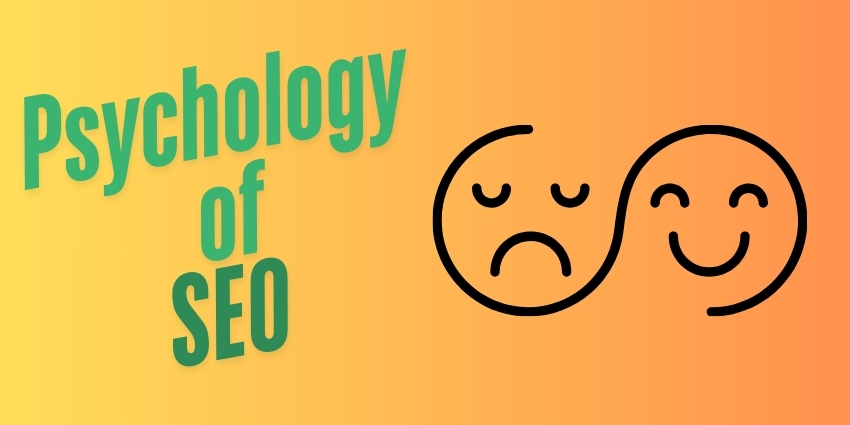When we talk about SEO, it’s easy to fall into the trap of thinking purely about keywords, backlinks and technical optimisations. But at Today Digital, we’ve found that truly effective SEO isn’t just about pleasing algorithms—it’s about understanding the psychology of your audience and creating content that resonates on a human level.
Beyond the Algorithm: The Human Element of SEO
I’ve seen countless marketing teams approach SEO as a technical exercise, focusing solely on ranking factors while losing sight of what actually matters: connecting with real people who have real needs. The most successful content strategies we’ve implemented across our publications—UC Today, CX Today, XR Today and AI Today—all share a common foundation: they start with understanding our audience’s psychology.
The truth is, Google’s algorithms have evolved to mimic human preferences. They’re specifically designed to present helpful, reliable information that’s primarily created to benefit people, not to gain search engine rankings. When we create content that genuinely helps, educates or inspires our audience, we’re simultaneously satisfying the criteria that search engines use to determine value. This isn’t coincidental—it’s by design.
The Psychology Behind Search Queries
People don’t just type words into search engines; they express needs, concerns, curiosities and intentions. Each search query represents a person trying to solve a problem or answer a question, and understanding this psychology is crucial for effective SEO.
Consider someone searching “best collaboration tools for remote teams.” This person isn’t just looking for a list—they’re likely feeling the challenges of managing remote work, seeking solutions to improve team cohesion, and possibly facing pressure to make the right purchasing decision.
By understanding these underlying psychological drivers, we can craft content that addresses not just the surface-level query but the deeper needs behind it. This creates a stronger connection with the reader and signals to search engines that our content provides genuine value.
The Psychology-First SEO Checklist
✅ Identify audience pain points: Research and document the specific challenges your audience is trying to solve
✅ Map emotional triggers: Understand what emotions drive search behavior in your industry (fear, aspiration, curiosity)
✅ Analyze search language: Study how your audience phrases their queries—note differences between industry jargon and customer language
✅ Clarify search intent: Determine whether searchers need information, solutions, comparisons, or purchasing guidance
✅ Create content hierarchies: Structure content to address both immediate questions and deeper underlying needs
✅ Incorporate trust signals: Add elements that build credibility (research, statistics, expert quotes, case studies)
✅ Test headlines for emotional impact: Craft titles that trigger curiosity while clearly communicating value
✅ Apply readability principles: Use sentence structure, paragraph length, and formatting that reduces cognitive load
✅ Include action-oriented elements: Provide clear next steps that align with the searcher’s goals
✅ Measure engagement metrics: Track time on page, scroll depth, and interaction rates to gauge psychological connection
Aligning SEO with Audience Priorities
One of the most powerful shifts in our approach to SEO at Today Digital came when we started anchoring our keyword strategy to our audience’s priorities rather than product features or industry jargon.
For example, when creating content about customer experience technology, we discovered through research that business leaders weren’t searching for technical specifications—they were looking for ways to improve customer retention, reduce support costs, and enhance satisfaction metrics. By aligning our SEO strategy with these priorities, we created content that both ranked well and genuinely resonated with decision-makers.
This approach requires a deeper level of audience research:
- What language do your customers use when describing their challenges?
- What outcomes are they trying to achieve?
- What are their fears and aspirations?
- Where are they in their buyer journey?
The answers to these questions should form the foundation of your SEO strategy, informing everything from keyword selection to content structure.
People-First Content: Google’s Own Guidance
Google’s automated ranking systems specifically reward what they call “people-first content”—content created primarily for people, not to manipulate search rankings. According to Google’s own guidelines, people-first content demonstrates:
- First-hand expertise and depth of knowledge
- A clear purpose or focus
- Completeness that helps readers achieve their goals
- A satisfying experience that answers questions without needing further searches
At Today Digital, we’ve found this approach not only aligns perfectly with effective SEO but also creates content that our audience genuinely values—content they want to bookmark, share, and return to. This is the foundation of building lasting relationships with your audience.
The Psychology of Engagement
Search engines increasingly use engagement metrics as ranking signals. This means that creating content that captures and maintains attention is now directly tied to SEO success.
We’ve found that applying psychological principles of engagement can dramatically improve these metrics:
- Curiosity gaps: Creating headlines and introductions that hint at valuable information without revealing everything upfront
- Cognitive ease: Using clear, simple language and well-structured content that’s easy to process
- Pattern breaks: Introducing unexpected elements or insights that disrupt predictable patterns and maintain interest
- Emotional resonance: Incorporating stories and examples that trigger emotional responses
When we redesigned our content strategy for AI Today, our newest publication, we deliberately incorporated these principles. The result was a 42% increase in average time on page compared to our earlier approach—a metric that directly benefits our search visibility.
Crafting SEO-Driven Messages with Psychological Appeal
So how do you create marketing messages that satisfy both human psychology and search algorithms? Here’s the framework we use:
- Start with audience priorities: Identify the key challenges, goals and questions your target audience has
- Research the language: Analyze how your audience describes these priorities in their own words
- Map to search intent: Understand what type of content (informational, navigational, transactional) best serves each priority
- Create value-first content: Develop content that genuinely helps your audience address their priorities
- Optimize thoughtfully: Apply technical SEO best practices without compromising the human appeal of your content
Let me share a real example. When launching a campaign for a unified communications client, we discovered their target audience was searching for ways to “improve team collaboration” rather than technical terms like “UCaaS deployment.” By crafting content around improving collaboration outcomes—while thoughtfully incorporating the technical terms where appropriate—we created a campaign that drove both search visibility and genuine engagement.
The Future: Intent and Context
As search engines become increasingly sophisticated in understanding user intent and context, the alignment between SEO and psychology will only grow stronger. Voice search, for instance, has already pushed us toward more conversational, natural language content that better matches how people actually think and speak.
At Today Digital, we’re investing in understanding these evolving patterns of search behavior. By analyzing not just what people search for but why they search and how they engage with the results, we can stay ahead of algorithm changes and create content that truly serves our audience.
Bringing It All Together
The most effective SEO strategy isn’t about tricking algorithms or stuffing keywords. It’s about deeply understanding your audience, aligning with their priorities, and creating content that genuinely helps them achieve their goals.
When marketing messages are crafted with both SEO and human psychology in mind, they don’t just rank well—they resonate, engage, and convert. They establish your brand as a trusted resource that understands and addresses real human needs. And in today’s competitive digital landscape, that human connection is the ultimate ranking factor.
What psychological factors do you consider when creating content for your audience?
Ready to Transform Your Content Strategy?
Download our Media Kit to discover how Today Digital is helping leading technology brands win with psychologically-informed, SEO-optimized content that drives real business results. See how our approach has transformed engagement metrics and pipeline generation for companies just like yours.











